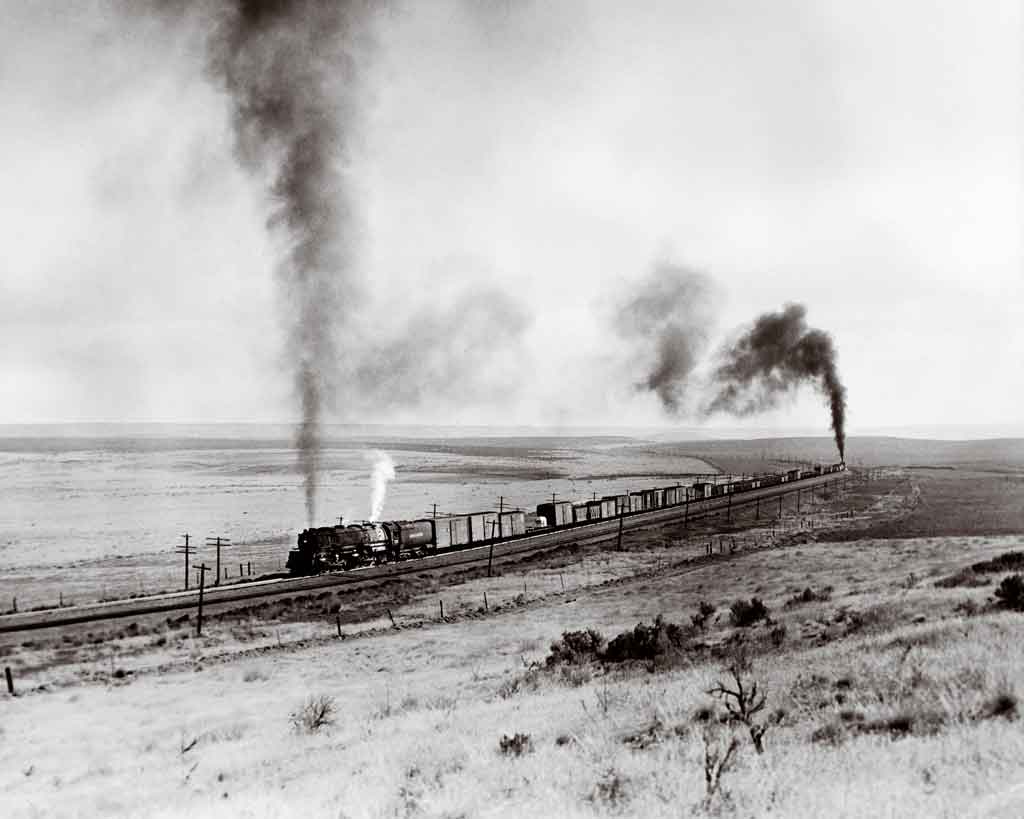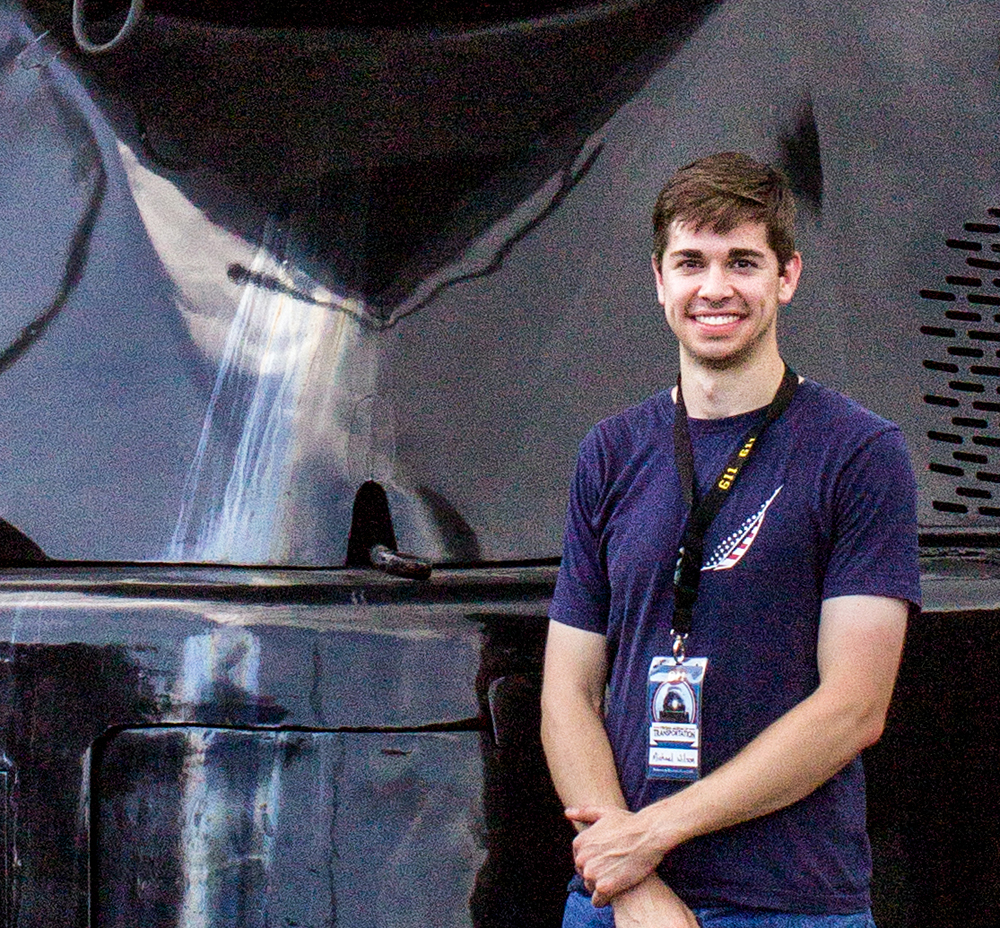In the early 1950s, I was working the extra board as a fireman. One of my neighbors, Ace Mierhoff, had hired out as a brakeman about the same time I did. Both of us had worked just long enough to be real hot shots in our own eyes, and we were very competitive with each other. Further, we certainly were not beyond belittling each other for perceived mistakes.
All day one October 4th, Ace and I had wanted to go pheasant hunting, but neither of us dared to leave the telephone for fear of missing a call to work. It was good we stayed home, as about 4 o’clock the phone did ring, calling me for a west hill helper job with engine 3807 and engineer Wilson Steen. Little did I know that Ace had been called as a rear brakeman on the same train.
Wilson was a swell guy working from the engineers’ extra board and had recently become a representative in the Idaho state legislature. He was the kind of engineer after whom I hoped to pattern myself. This required developing a sense of pride in doing the job right, as well as learning the required skills. From a fireman’s standpoint, doing the job right meant firing an engine to achieve a maximum steam pressure with a minimum of smoke.
Built in 1936, our engine was from UP’s first batch of 4-6-6-4 Challenger articulated locomotives. They had 69-inch drivers and carried 255 pounds boiler pressure. Most were built as coal burners, but by the 1950s they had all been converted to burn oil.
The fireman on an oil-burner has considerably more immediate control of the fire than he does on a coal-burner. The oil firing valve has direct control over the amount of oil being consumed, as indicated by the color of smoke at the stack. This in turn depends on how hard the locomotive is being worked. By watching the stack with one eye and the engineer with the other, a balance can be met that requires no more than a light haze at the stack even when under full throttle. Of course, operation of the atomizer, draft door, and oil temperature control also entered the equation. All this is true with a properly steaming locomotive in a perfect world.
In the real world, all sorts of obstacles can and do come up. Things such as the condition and temperature of the oil, the basic condition of the locomotive, and the operating methods of the engineer all came into play. The results in these cases were sometimes not exactly favorable to an environmentalist, or anyone else.
The westbound train that we were to help had arrived. It had three EMD F units on the point. Wilson and I, with the 3807, were attached to the rear of the steel caboose. Soon the air test was completed and we began to move.
Since the line is nearly flat for the first 10 miles, we just loafed along with the 3807. But when the train hit the grade, we really began to work. The engine was steaming well, with Wilson giving the train a hefty shove with about 15 pounds showing on the back-pressure gauge. I had a nearly clear stack and plenty of water in the boiler. All was well with the world!
About 5 miles up the hill, the track curves through a chalk cut. Just as we entered this cut, the head end, for some unknown reason, set the air and we quickly came to a stop. This was before the days of radio communication. As the rules required, the rear brakeman, my buddy Ace Mierhoff, got off the caboose and started walking back to give flag protection to the rear of the train. The 3807 had been operating right against the 255 pounds of pressure. When the throttle was suddenly shut off, I knew it was but a matter of seconds before the safety valves popped. So I pulled a newly learned trick and completely shut off the oil. This killed the fire, but I was not worried about getting it back because the almost incandescent brick lining in the firebox would easily ignite the oil when I reopened the firing valve. And, with the feedwater pump still operating, I was able to avoid the safety valves lifting. Boy was I smart!
Suddenly the slack ran out and we started moving. To avoid a break-in-two, Wilson immediately started working the engine. This allowed a mass of cool air to be drawn into the firebox, and I knew I had to get the fire relit immediately. I fed it a shot of oil but had no luck. I gave it another. Still no luck. At this point I was desperate and opened the oil valve considerably. It worked! With a minor explosion and accompanying clouds of acrid black smoke that filled the cab and engulfed the engine for a few moments, the fire was now burning bright.
The wind was such that neither Wilson nor I had heard the flagman being whistled in, but Ace had heard it. He made a dash for the caboose and was just beside the firebox on the engineer’s side when my explosion occurred. Wilson said that when the smoke cleared, he could see Ace on the rear platform of the caboose with a thoroughly blackened face, shaking his fist at us. The curvature of the track kept him out of my view, but I knew the fist was for me.
I was able to avoid Ace for the next few days. In fact, the next time I saw him, he was standing at the west switch of Kuna siding. He was working as head brakeman on a train that was in the passing track for a meet with us. This had been one of those trips when all was not right with the world. I was on an eastbound drag pulled by the 3817, a notoriously poor steamer. Also, the engineer was a real jerk. I had struggled with 3817 all night long after boarding it in Huntington, Ore., the end of our subdivision. And we were only halfway home! After leaving our mid-point at Nampa, the line climbs on about a 1 percent grade through Kuna to Orchard.
The engine was working hard on this grade and I was fighting for steam. As a last resort, I thought I would try feeding more sand through the flues, though I had periodically done this during the trip. This time, though, I was desperate enough to try almost anything. Rather than three of four scoops, I just kept feeding the sand and, to my surprise, the steam pressure started rising. The object of sanding the flues is to remove the accumulation of soot which builds up and acts as an insulator to inhibit good heat transfer. And, of course, all that soot is ejected in voluminous clouds of black out the stack.
I was still busy sanding flues when we met Ace’s train, with him standing beside the track. He later claimed that it literally rained wet soot on him. And as we passed, he forcefully looked up at the cab to see who was making this mess. Guess who he saw? At that moment, I acquired the handle of “Old Smoky.” No explanation of circumstances could rid me of this wound to my pride.
So, painful as it was, I lived with the moniker for a year or so until I transferred to Salt Lake City and lost contact with Ace and the nickname.
First published in Spring 2005 Classic Trains magazine.
Learn more about railroad history by signing up for the Classic Trains e-mail newsletter. It’s a free monthly e-mail devoted to the golden years of railroading.















In the 1950s I was a fireman in the Victorian Railways in Australia and was usually rostered to fire for George Downie. One night we were climbing the Haunted Hills with a heavy train hauled by an oil fired C class locomotive 2-8-0. This particular engine was always a bad steamer, I had sanded it frequently with little improvement. I had been told never to use the pipe heat on a C class because the oil will boil and the fire will go out. As a last resort I decided to turn on the pipe heat on the pipe to the burner, and was delighted to see an improvement in the steam pressure. Then the oil to the burner boiled and a sheet of flame shot out from the fire-door and the cab was filled with thick black smoke, and the fire went out. I quickly turned off the pipe heat and the oil, then slowly opened the oil valve to the burner. The fire re-ignited with a great whoosh and the cab was again full of smoke. George looked across the cab and wondered what I was doing, his face and overalls were covered in soot. I never used the pipe heat on a C class ever again.